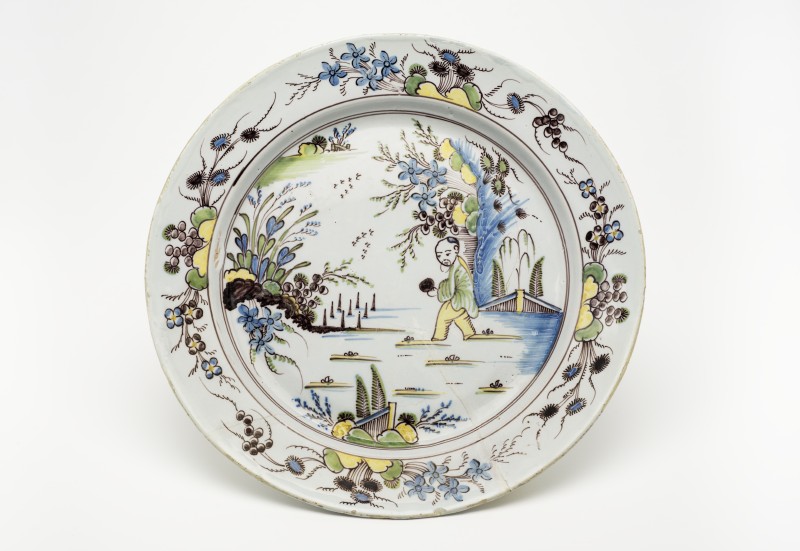Teller auf Standring mit flachem Spiegel, kurzem Anstieg und schräg ansteigender Fahne. Der Standring für Aufhängevorrichtung zweifach durchbohrt.
Die Bemalung in ostasiatischer Manier: Chinese in üppiger Blütenlandschaft. Auf der rechten Seite und unten Zaunelemente. Auf der Fahne vier großflächige Blütenarrangements.
Zahlreiche Glasurabplatzungen am Fahnenrand, alt restauriert. Zwei Sprünge mit jeweils zwei Klammerungen. Stark vergilbte Retuschen wurden entfernt.
Marke auf dem Boden: „H“ in Inglasurblau
Schenkung Herta und Hansjörg Koch, Lörrach, 2009
en

